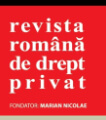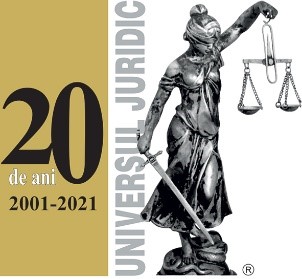Tot ce nu este interzis este permis sau tot ce nu este permis este interzis? (Jocul permisiunilor, al comenzilor şi al interdicţiilor în dreptul privat şi în dreptul public)
valeriu.stoica[at]drept.unibuc.ro
Cuvinte cheie:
freedom, safety, order, legal normsRezumat
“In the private space, the principle according to which everything which is not forbidden is allowed operates. The private space is governed by the principle that everything which is not forbidden is allowed”. Similarly, it has been stated that “in public law, there is a rule that the authority is forbidden everything which is not allowed by law and in private law, there is a rule that everything which is not forbidden by law is allowed”. These statements are a good starting point for a brief analysis of the game of permissions, commands and prohibitions in the private and public law. A good guide on this road is G.H. von Wright.
At this starting point, the following question is natural: why the first pair of statements refer to the private space and the public space, and the second pair of statements refer to the private law and the public law? The answer to this question – closely related to the freedom and security of the person – highlights both the complementarity within each pair of terms, and the complementarity between the two pairs of terms (II). On this basis, it can be better understood why the objective law is not a simple reflection of the social reality, is not a purpose in itself, but its realization ensures the change from what it is to what it should or may be, avoiding, within human limits, the trap of what is impossible to be, within one and the same legal order (III). Continuing the analysis, one can decipher, from the regulatory perspective and in terms of the regulated social relations, some of the meanings of the adage “everything is not forbidden is allowed” (IV) and of the adage “everything is not allowed is forbidden” (V), with important consequences regarding the institutional and legal architecture of the space of freedom and security both for each human being, as a subject of private law and a subject of public law, and for the society, as a whole, in relation to the State power structures (VI). The fair correlation between the two adages implies both a reference to an external (natural or divine) reason superior to any regulatory authority (namely to a supreme criterion of validation of norms), and the hierarchy and consistency of the regulatory order (VII). At the end of this analysis, it will be possible to draw a few conclusions (VIII).
Publicat
Versiuni
- 24-04-2023 (2)
- 24-04-2023 (2)
- 13-09-2022 (1)









